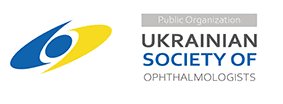Ocular manifestations of trigeminal autonomic cephalgias: analysis of cases
DOI:
https://doi.org/10.31288/oftalmolzh202126468Keywords:
cephalgia, diagnostic criteria, autonomic symptoms, ophthalmalgiaAbstract
Trigeminal autonomic cephalgias (TACs) are the most common group of cephalgias with ocular symptoms and can be subdivided into cluster headache, paroxysmal hemicrania, short-lasting unilateral neuralgiform headache attacks and hemicrania continua. The diagnostic criterion at least one of the following autonomic symptoms or signs, ipsilateral to the headache: conjunctival injection and/or lacrimation; nasal congestion and/or rhinorrhoea; eyelid edema; forehead and facial sweating; forehead and facial flushing; sensation of fullness in the ear; and miosis and/or ptosis. Symptoms of sympathetic blockade (ptosis, myosis, Horner’s syndrome) may be present. Another characteristic that TACs share is periorbital or retroorbital location of headache pain. The cases of TACs reported demonstrate potential diagnostic pitfalls and patterns of ocular symptoms and treatment of these diseases. These patients not uncommonly present to ophthalmologists. Paying close attention to autonomic symptoms during history collection and meticulous elucidation of headache characteristics will facilitate a diagnosis and first-line treatment decisions.
References
1.Dafer MR, Jay WM. Headache and the eye. Curr Opin Ophthalmol. 2009 Nov;20(6):520-4. https://doi.org/10.1097/ICU.0b013e328331270d
2.International Classification of Headache Disorders. 2nd edition. Cephalalgia 2004;24 (Suppl):9-160.
3.Hoffmann J, May A. Diagnosis, pathophysiology, and management of cluster headache. Lancet Neurol. 2018;17(1):75-83. https://doi.org/10.1016/S1474-4422(17)30405-2
4.Ljubisavljevic S, Zidverc Trajkovic J. Cluster headache: pathophysiology, diagnosis and treatment. J Neurol. 2019;266(5):1059-66. https://doi.org/10.1007/s00415-018-9007-4
5.Matharu M, Goadsby P: Cluster headache-update on a common neurological problem. Pract Neurol. 2001;1:42-9. https://doi.org/10.1046/j.1474-7766.2001.00505.x
6.Goadsby PJ, Cittadini E, Cohen AS. Trigeminal autonomic cephalalgias: paroxysmal hemicrania, SUNCT/SUNA, and hemicrania continua. Semin Neurol. 2010;30(2):186-91. https://doi.org/10.1055/s-0030-1249227
7.Prakash S, Patell R. Paroxysmal hemicrania: an update. Curr Pain Headache Rep. 2014 Apr;18(4):407. https://doi.org/10.1007/s11916-014-0407-6
8.Lambru G, Matharu MS. SUNCT, SUNA and trigeminal neuralgia: different disorders or variants of the same disorder? Curr Opin Neurol. 2014;27(3):325-31. https://doi.org/10.1097/WCO.0000000000000090
9.Pomeroy JL, Nahas SJ. SUNCT/SUNA: A Review. Curr Pain Headache Rep. 2015;19(8):38. https://doi.org/10.1007/s11916-015-0511-2
10.Williams M.H., Broadley S.A., SUNCT and SUNA: clinical features and medical treatment. J Clin Neurosci. 2008; 15:526-34. https://doi.org/10.1016/j.jocn.2006.09.006
11.Pareja JA, Antonaci F, Vincent M. The hemicrania continua diagnosis. Cephalalgia. 2001;21(10):940-6. https://doi.org/10.1046/j.1468-2982.2001.00290.x
12.Vincent MB. Hemicrania continua. Unquestionably a trigeminal autonomic cephalalgia. Headache. 2013;53(5):863‐868. https://doi.org/10.1111/head.12092
Downloads
Published
How to Cite
Issue
Section
License
Copyright (c) 2025 В. В. Білошицький, В. А. Васюта, М. В. Білошицька

This work is licensed under a Creative Commons Attribution 4.0 International License.
This work is licensed under a Creative Commons Attribution 4.0 International (CC BY 4.0) that allows users to read, download, copy, distribute, print, search, or link to the full texts of the articles, or use them for any other lawful purpose, without asking prior permission from the publisher or the author as long as they cite the source.
COPYRIGHT NOTICE
Authors who publish in this journal agree to the following terms:
- Authors hold copyright immediately after publication of their works and retain publishing rights without any restrictions.
- The copyright commencement date complies the publication date of the issue, where the article is included in.
DEPOSIT POLICY
- Authors are permitted and encouraged to post their work online (e.g., in institutional repositories or on their website) during the editorial process, as it can lead to productive exchanges, as well as earlier and greater citation of published work.
- Authors are able to enter into separate, additional contractual arrangements for the non-exclusive distribution of the journal's published version of the work with an acknowledgement of its initial publication in this journal.
- Post-print (post-refereeing manuscript version) and publisher's PDF-version self-archiving is allowed.
- Archiving the pre-print (pre-refereeing manuscript version) not allowed.












